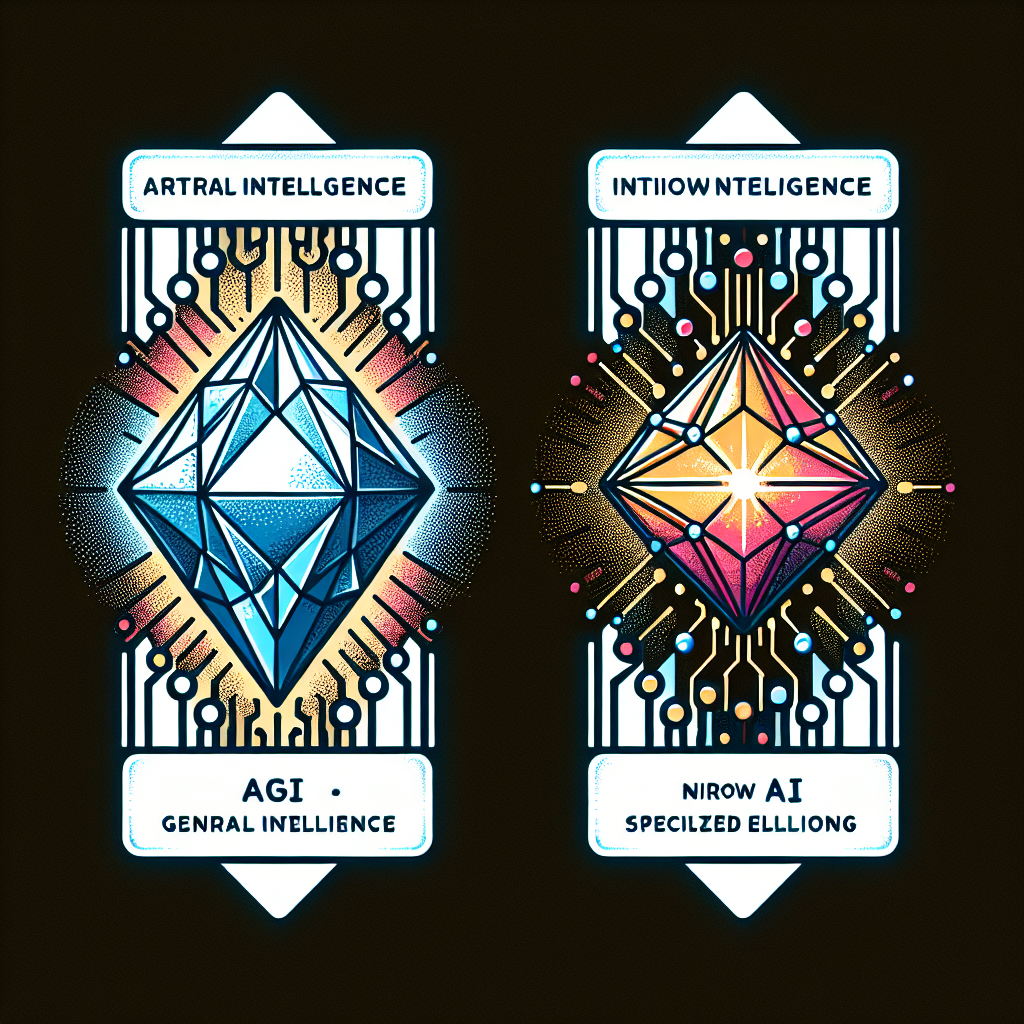Artificial intelligence (AI) has become a buzzword in recent years, with advancements in technology allowing for the development of increasingly sophisticated AI systems. Two terms that are frequently mentioned in the field of AI are AGI (Artificial General Intelligence) and Narrow AI. While these terms may seem similar, they represent two very different types of AI systems with distinct capabilities and limitations. In this article, we will explore the key differences between AGI and Narrow AI, and discuss the implications of these differences for the future of AI technology.
AGI vs. Narrow AI: Understanding the Key Differences
AGI, also known as Strong AI, refers to an AI system that possesses human-like intelligence and the ability to perform a wide range of cognitive tasks. AGI systems are designed to think, learn, and reason in a manner similar to human beings, and are capable of adapting to new situations and solving complex problems. The goal of AGI research is to create AI systems that can perform any intellectual task that a human can, with the same level of proficiency and flexibility.
In contrast, Narrow AI, also known as Weak AI, refers to AI systems that are designed to perform specific tasks or functions within a limited domain. Narrow AI systems are highly specialized and are optimized for a particular task, such as image recognition, natural language processing, or game playing. While Narrow AI systems can be highly effective at performing specific tasks, they lack the general intelligence and adaptability of AGI systems.
One of the key differences between AGI and Narrow AI is the scope of their capabilities. AGI systems are designed to be generalists, with the ability to perform a wide range of tasks and adapt to new situations. In contrast, Narrow AI systems are specialists, with expertise in a particular domain or task. While Narrow AI systems may outperform AGI systems in their specific area of expertise, they lack the flexibility and adaptability of AGI systems.
Another key difference between AGI and Narrow AI is the level of autonomy and self-learning capability. AGI systems are designed to be autonomous and self-learning, with the ability to improve their performance over time through experience and learning. In contrast, Narrow AI systems are typically programmed with a fixed set of rules and algorithms, and do not have the ability to learn or adapt on their own.
Implications for the Future of AI Technology
The differences between AGI and Narrow AI have significant implications for the future of AI technology. While Narrow AI systems have already demonstrated impressive capabilities in specific domains, such as image recognition, language translation, and game playing, they are limited in their ability to generalize and adapt to new tasks and environments. As a result, there is a growing interest in developing AGI systems that can perform a wide range of cognitive tasks with the same level of flexibility and adaptability as human beings.
The development of AGI systems has the potential to revolutionize a wide range of industries and fields, including healthcare, finance, transportation, and entertainment. AGI systems could be used to automate routine tasks, improve decision-making processes, and assist with complex problem-solving tasks. In healthcare, for example, AGI systems could be used to analyze medical imaging data, diagnose diseases, and develop personalized treatment plans. In finance, AGI systems could be used to analyze financial data, predict market trends, and optimize investment portfolios.
However, the development of AGI systems also raises a number of ethical, societal, and existential questions. For example, there are concerns about the impact of AGI systems on the job market, as automation could lead to widespread unemployment and economic disruption. There are also concerns about the potential for AGI systems to outperform human beings in intellectual tasks, leading to questions about the nature of intelligence and the role of AI in society.
FAQs
Q: What are some examples of Narrow AI systems?
A: Some examples of Narrow AI systems include virtual assistants like Siri and Alexa, recommendation systems like those used by Netflix and Amazon, and autonomous vehicles like self-driving cars.
Q: How close are we to achieving AGI?
A: While progress has been made in the field of AI research, achieving AGI remains a challenging and long-term goal. Researchers continue to work on developing AI systems that can perform a wide range of cognitive tasks with the same level of flexibility and adaptability as human beings.
Q: What are some of the ethical concerns surrounding AGI?
A: Some of the ethical concerns surrounding AGI include the impact on the job market, the potential for bias and discrimination in AI systems, and the implications for privacy and security. There are also concerns about the potential for AGI systems to outperform human beings in intellectual tasks, raising questions about the nature of intelligence and the role of AI in society.
In conclusion, AGI and Narrow AI represent two fundamentally different approaches to artificial intelligence, with distinct capabilities and limitations. While Narrow AI systems excel at performing specific tasks within a limited domain, AGI systems are designed to possess human-like intelligence and the ability to adapt to new situations and solve complex problems. The development of AGI systems has the potential to revolutionize a wide range of industries and fields, but also raises a number of ethical, societal, and existential questions. As researchers continue to make progress in the field of AI research, it will be important to consider the implications of these advancements for the future of AI technology and society as a whole.

